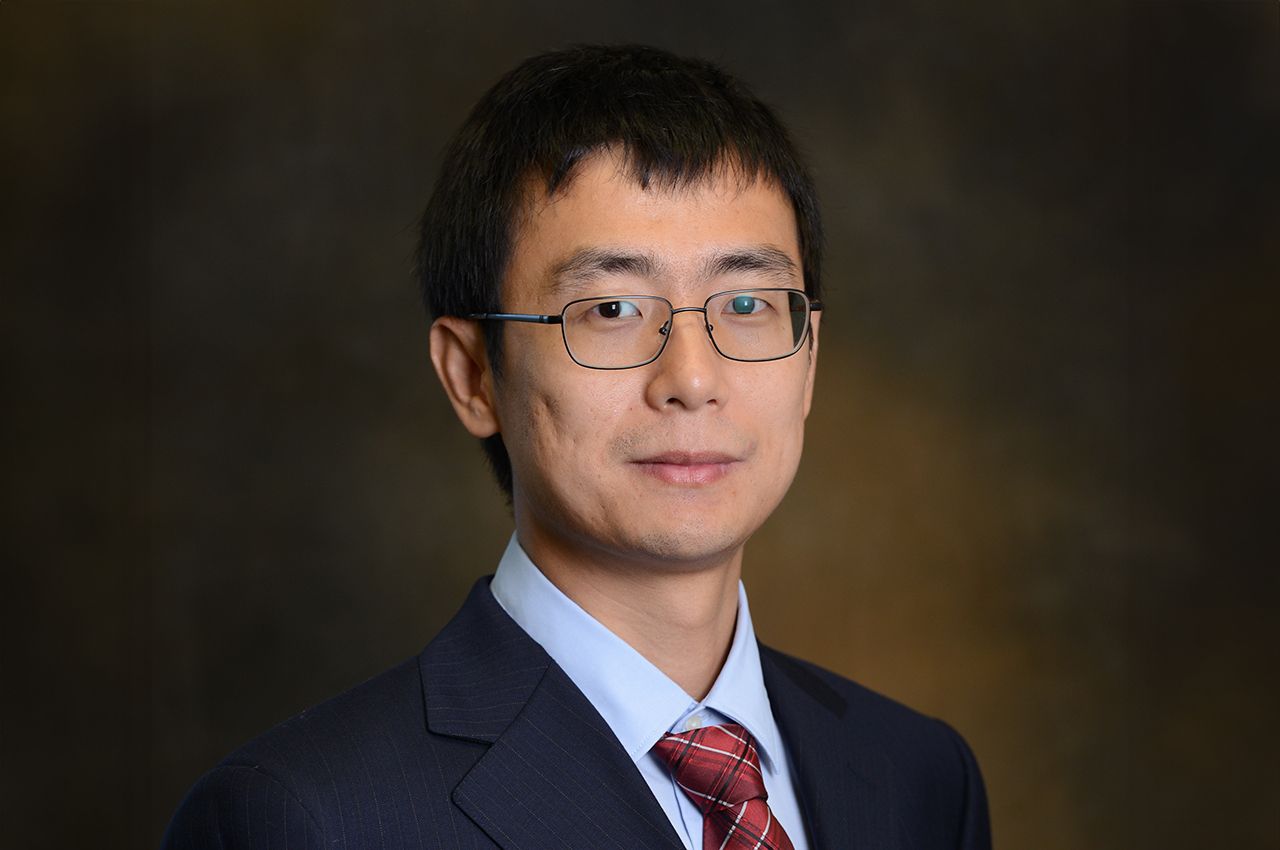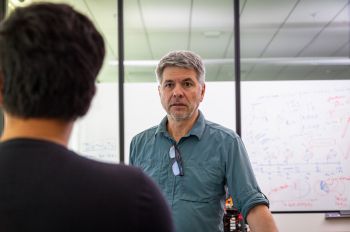NSF Funding to Push Moore’s Law to New Heights

The capabilities of electronic devices have grown exponentially in recent decades, but the hardware making this possible is starting to reach the limits for how small and how fast it can get.
Illinois Institute of Technology Assistant Professor of Materials Science and Engineering Heng Wang has received an award from the National Science Foundation to investigate a solution with the potential to blow progress wide open again through spintronics, which adds a whole new dimension of information to the way data is stored.
The language of electronics is ones and zeros. In conventional electronics, that information is stored in chips through either the presence or absence of electrons.
Electrons have a quantum mechanical property called spin, and at any given time they can be in either a spin-up or spin-down state.
The idea behind spintronics is to develop hardware that can change and maintain the state of the electron spin in a way that encodes a new layer of ones and zeroes in the electrons already present in a device.
“The spin carries another layer of information, so you can use that for logic operations and that promises better computing performance,” says Wang. “Spintronics has been studied for a while, but so far it hasn’t reached commercialization because nature has a very strong tendency to change the spins so that there is an equal number of each state in a group of electrons.”
The key will be to develop materials with the unique property of only allowing electrons of one spin type to pass through them. Wang says that one of the main issues with candidate materials so far has been the presence of atomic defects, so the team will be conducting a systematic study of the defects present.
“Defects occur naturally in these materials, it’s not that something was done wrong. There’s no way to eliminate them, that would be like a battle against nature. So what we’re looking for is a better understanding of how they affect the material properties so that we can find a way to suppress the killer defects and promote the ones that won’t jeopardize the desired properties as much,” says Wang.
His group will work on understanding what is needed to create thin layers of the material in a way that is consistently reproducible—a necessary step for future commercialization.
“Technology-wise our target for this project is to realize a feasible design to allow us to use spin for logic operation in electronic devices,” says Wang. “One day the processors in our electronic devices may rely on not only charge, but also spin, which would lead to a huge increase in performance and much more powerful chips that what we’re using today.”
This grant is provided through NSF’s Future of Semiconductors (FuSe) program, which will provide Wang with the opportunity to explore partnerships with semiconductor industry leaders including Ericsson, IBM, Intel, and Samsung.
“The success of the CHIPS and Science Act hinges on America’s ability to create a robust and diverse ecosystem of skilled semiconductor talent. The best way to accomplish this is through public-private partnerships that provide hands-on learning opportunities with equitable access,” says Richard Uhlig, senior fellow and director of Intel Labs at Intel Corporation.
Wang’s partners in academia include collaborators at the University of Cincinnati, Iowa State University, Northern Illinois University, and the University of Alabama. The partnership with Northern Illinois will also provide access to the advanced photon source at Argonne National Laboratory, which will be used to precisely measure the materials’ atomic configuration.
The award also supports training for developing the semiconductor industry workforce. Wang has a number of initiatives planned with the overall goal of helping people understand the opportunities in the field, including outreach to the general public and educators and the development of a microcredential in technology communication.
“These are high-paying, high-tech jobs. Currently, in the United States, we are short on capable skilled workers: scientists, engineers, technicians, and workers on all different levels,” says Wang. “We want to educate the public on the accessibility of securing a job in this field. While it may sound extremely high tech, it’s not something unreachable. You don’t have to be a rocket scientist to work in this field.”
Image: Assistant Professor of Materials Science and Engineering Heng Wang


![[From left to right] Associate Professor of Biomedical Engineering Kenneth Tichauer and Professor of Electrical and Computer Engineering Jovan Brankov](/sites/default/files/styles/width_350/public/2024-11/tichauer-brankov_1280x850.jpg?itok=hxdjBhlU)

